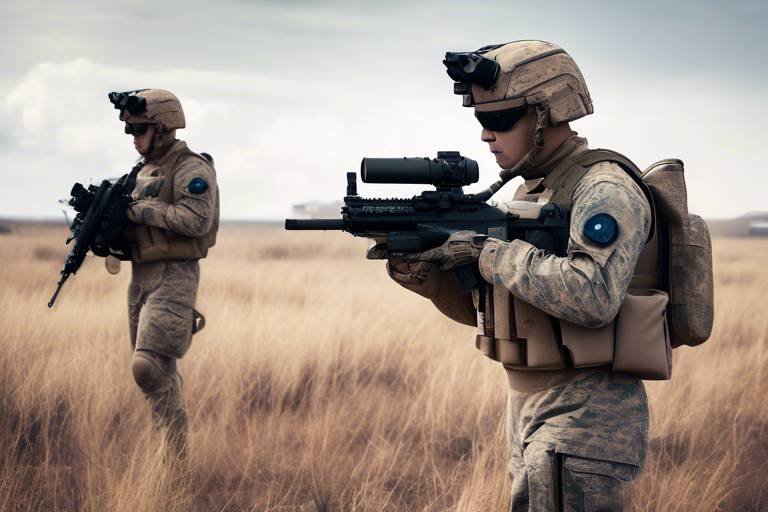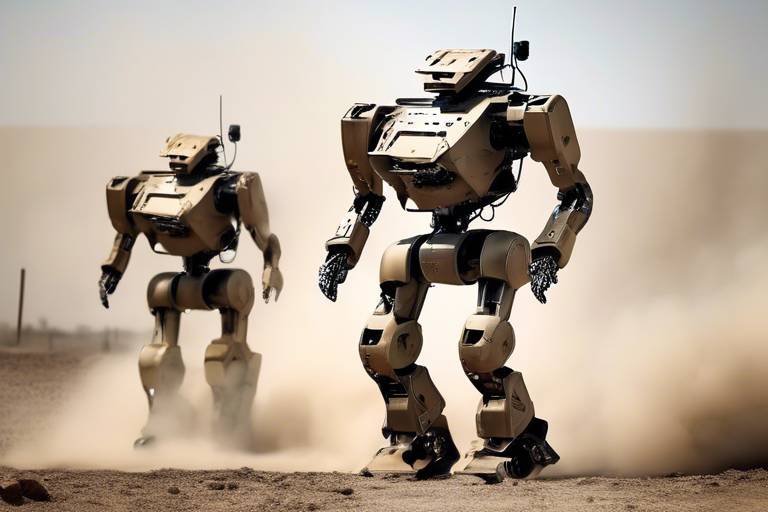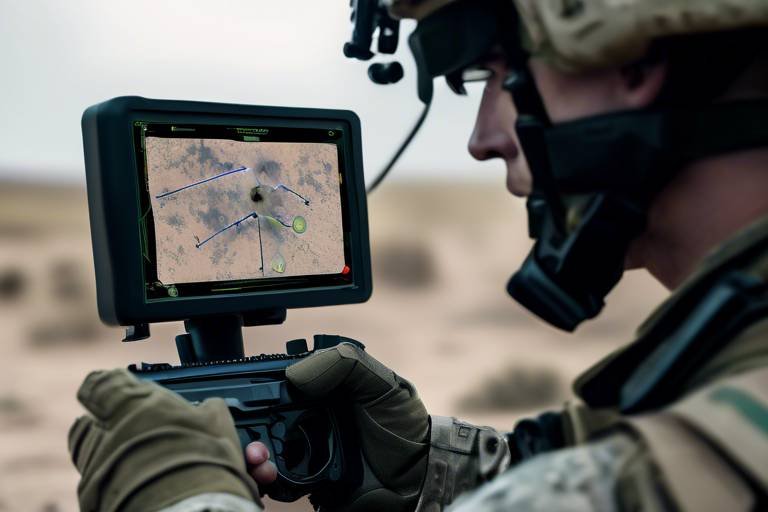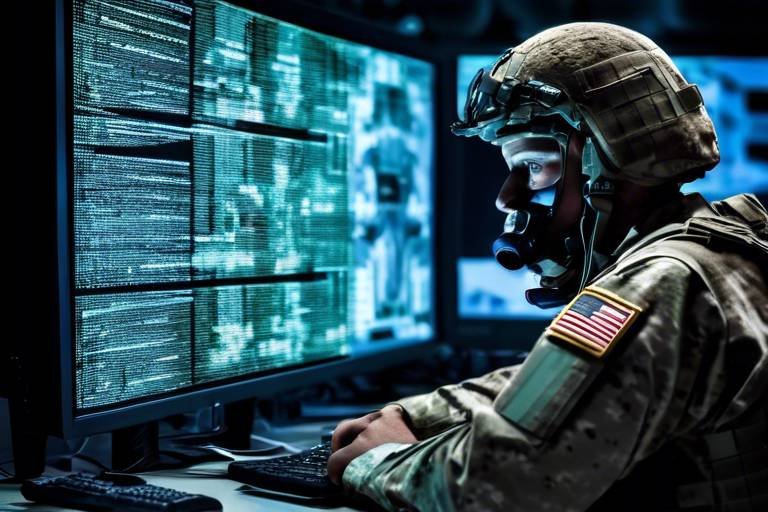Top Innovations in Military Medical Technology
In the ever-evolving landscape of warfare, the importance of military medical technology cannot be overstated. As conflicts become more complex and the nature of injuries shifts, the need for cutting-edge medical solutions has surged. This article delves into the groundbreaking advancements that are not only enhancing battlefield care but also revolutionizing the overall health and well-being of soldiers. From telemedicine to artificial intelligence, these innovations are shaping the future of military medicine, ensuring that our troops receive the best possible care, no matter where they are stationed.
Imagine a battlefield where a soldier can receive medical advice from a specialist miles away, or where a doctor can monitor vital signs in real-time, all while under fire. These scenarios are becoming a reality thanks to the integration of modern technology into military healthcare. The innovations discussed in this article are not just theoretical; they are actively saving lives and improving outcomes for injured personnel. So, let’s dive deeper into these transformative technologies that are setting new standards in military medical care.
Telemedicine has revolutionized how medical professionals provide care in remote combat zones, enabling real-time consultations and support. This innovation enhances decision-making and improves patient outcomes, even in the most challenging environments. Imagine a medic in the field, equipped with a tablet, able to connect with a surgeon thousands of miles away. This capability allows for immediate guidance on complex procedures, ensuring that soldiers receive the best possible care without delay.
Wearable health monitoring devices are becoming essential for soldiers, allowing for continuous tracking of vital signs. These technologies help detect health issues early, ensuring timely intervention and maintaining operational readiness. With sensors that monitor heart rate, body temperature, and other critical indicators, these devices provide a comprehensive view of a soldier's health, alerting medical personnel to any abnormalities before they escalate into serious problems.
Innovative trauma care techniques have emerged to improve survival rates for injured soldiers. These methods focus on rapid response and stabilization, transforming how medical personnel address severe injuries on the battlefield. For instance, the use of tourniquets has been refined to minimize blood loss, while advanced wound dressings are designed to promote faster healing. The emphasis on training medics in these techniques ensures that they are prepared to act swiftly and effectively when every second counts.
3D printing technology is being utilized to create essential medical supplies on-demand. This capability not only reduces logistical challenges but also ensures that troops have access to necessary equipment and prosthetics when needed. Imagine being able to print a custom splint or even a prosthetic limb right in the field. This level of adaptability is crucial in conflict zones where traditional supply chains may be compromised.
Robotic surgery systems are enhancing precision in surgical procedures, even in austere environments. These systems allow for minimally invasive techniques, reducing recovery times and improving surgical outcomes for injured personnel. With the ability to perform complex surgeries remotely, these robotic systems are a game-changer for military medicine, providing high-quality care regardless of location.
Portable blood transfusion units are critical innovations that provide immediate access to life-saving blood products on the battlefield. These units streamline the transfusion process, significantly improving trauma care capabilities in combat situations. Every second counts when a soldier is bleeding out, and having the ability to transfuse blood quickly can mean the difference between life and death.
Augmented reality (AR) is transforming medical training for military personnel, offering immersive simulations that enhance learning. AR technology allows trainees to practice complex procedures in a safe, controlled environment, improving their skills and confidence. Picture a medic training on a virtual battlefield, where they can practice their techniques without the risk of real-world consequences. This innovative approach to training is preparing our soldiers for the challenges they will face in the field.
Mobile field hospitals equipped with advanced medical technology are crucial for providing care in conflict zones. These facilities ensure that soldiers receive timely medical attention, significantly impacting survival rates and recovery times. With the ability to set up quickly and provide comprehensive care, mobile hospitals are a vital component of military operations, ensuring that no soldier is left without the necessary medical support.
Artificial intelligence (AI) is being integrated into military medical diagnostics, enhancing accuracy and speed in identifying medical conditions. AI-driven tools support healthcare providers, enabling them to make informed decisions quickly in critical situations. By analyzing vast amounts of data, AI can help predict potential health issues before they arise, allowing for proactive rather than reactive care.
- What role does telemedicine play in military medical care? Telemedicine allows for real-time consultations between field medics and specialists, improving decision-making and patient outcomes.
- How do wearable devices benefit soldiers? Wearable health monitoring devices track vital signs continuously, helping to detect health issues early and ensuring timely intervention.
- What advancements have been made in trauma care? New techniques focus on rapid response and stabilization, improving survival rates and addressing severe injuries more effectively.
- How does 3D printing impact military medical supplies? 3D printing creates essential medical supplies on-demand, reducing logistical challenges and ensuring troops have what they need when they need it.
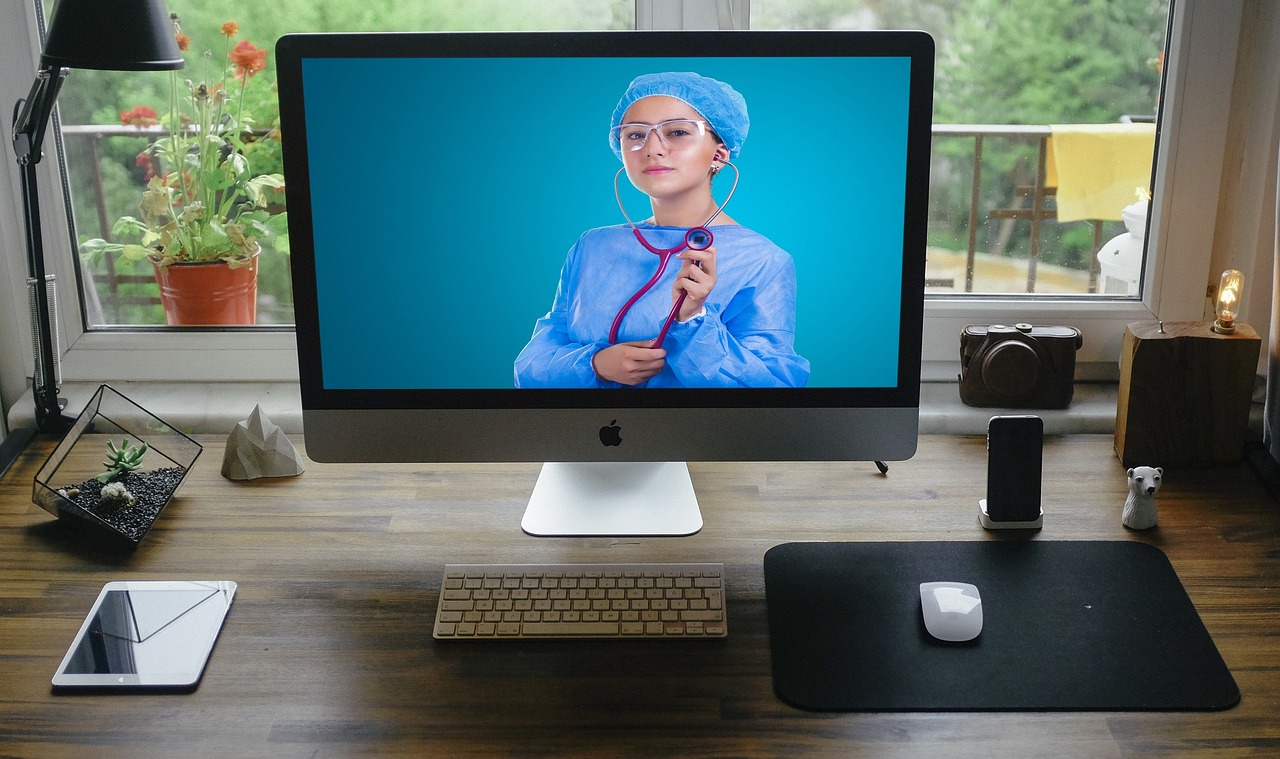
Telemedicine in Combat Zones
Telemedicine has emerged as a game-changer in the realm of military medical care, especially in remote combat zones where traditional medical facilities are often miles away or nonexistent. Imagine a battlefield where a soldier, injured and in pain, can instantly connect with a medical professional through a secure video link. This is not science fiction; it's the reality of modern warfare. With the advent of telemedicine, medical professionals can provide real-time consultations and support, ensuring that critical decisions can be made swiftly and effectively, even in the most challenging environments.
The ability to communicate with specialists from afar means that soldiers can receive expert advice on their conditions without having to wait for evacuation. This is particularly vital for trauma care, where every second counts. For instance, if a soldier suffers a severe injury, telemedicine allows medics on the ground to consult with trauma surgeons who can guide them through emergency procedures. This immediate access to expertise not only enhances decision-making but also significantly improves patient outcomes.
Moreover, telemedicine facilitates a collaborative approach to healthcare. Medical teams can work together across different locations, sharing insights and strategies to tackle complex medical situations. This collaboration can involve:
- Consultations with specialists in various fields, such as orthopedics or neurosurgery.
- Real-time monitoring of a patient’s condition, allowing for adjustments in treatment plans as necessary.
- Training opportunities for medics on the ground, enhancing their skills and confidence in handling emergencies.
One of the most significant benefits of telemedicine in combat zones is its ability to bridge the gap between the battlefield and advanced medical facilities. This connection is crucial for ensuring that soldiers receive the best possible care, no matter where they are located. Furthermore, telemedicine can help in mental health support, allowing soldiers to speak with mental health professionals about the stresses and traumas they face during deployment. This aspect of care is often overlooked but is essential for maintaining overall soldier health and readiness.
As technology continues to evolve, the future of telemedicine in military settings looks promising. With advancements such as mobile applications and wearable devices that monitor vital signs, the potential for remote healthcare is expanding rapidly. These innovations not only improve the quality of care but also ensure that soldiers are better prepared for the challenges they face on the battlefield.
In conclusion, telemedicine is revolutionizing military medical care by providing immediate access to expert advice, improving trauma care, and enhancing collaboration among healthcare providers. As we move forward, the integration of telemedicine into military operations will undoubtedly save lives and improve the overall health of our soldiers.
| Question | Answer |
|---|---|
| How does telemedicine work in combat zones? | Telemedicine allows medical personnel to connect with specialists via secure video links, enabling real-time consultations and guidance for treating injuries. |
| What are the benefits of telemedicine for soldiers? | It provides immediate access to expert care, improves decision-making in emergencies, and supports mental health through remote consultations. |
| Can telemedicine improve trauma care on the battlefield? | Yes, it allows medics to consult with trauma surgeons, ensuring that critical procedures can be performed quickly and effectively. |

Wearable Health Monitoring Devices
In the ever-evolving landscape of military medicine, have emerged as game-changers, bringing a new level of awareness and proactive care to soldiers on the battlefield. Imagine a soldier equipped with a device that continuously tracks vital signs, such as heart rate, temperature, and oxygen saturation, providing real-time data that can be crucial for survival. This technology not only enhances individual health monitoring but also allows medical teams to gather vital information quickly, ensuring that timely interventions can be made when necessary.
These devices are designed to be rugged and reliable, withstanding the harsh conditions often found in combat zones. They can be worn comfortably, seamlessly integrating into a soldier's uniform without hindering movement or operational effectiveness. The data collected can be transmitted wirelessly to medical personnel, enabling them to monitor the health status of troops from a distance. This is especially vital in remote areas where immediate medical assistance may not be available.
One of the most significant advantages of wearable health monitoring devices is their ability to detect early signs of health issues. For instance, a sudden spike in heart rate or a drop in oxygen levels can indicate serious complications, such as heat exhaustion or respiratory distress. With this information at hand, medics can prioritize care based on urgency, which is critical in high-stakes environments.
Furthermore, these devices can contribute to the overall operational readiness of military personnel. By continuously monitoring health metrics, soldiers can receive alerts about their physical condition, encouraging them to take necessary actions such as hydrating or resting before they push their limits. This proactive approach not only helps in maintaining peak performance but also reduces the risk of injuries and health emergencies during missions.
In addition to physiological monitoring, many of these devices also incorporate features that promote mental well-being. Stress levels can be tracked, and soldiers can receive guidance on relaxation techniques or cognitive exercises to help manage anxiety. In an environment where mental resilience is as critical as physical fitness, these features are invaluable.
As we look to the future, the integration of artificial intelligence and machine learning into these wearable devices is on the horizon. This will allow for even more sophisticated data analysis, enabling predictive health monitoring. Imagine a device that not only tracks your vitals but also learns from your patterns and can alert you to potential health risks before they become critical. The possibilities are endless, and the impact on soldier health and performance could be profound.
In summary, wearable health monitoring devices represent a significant leap forward in military medical technology. By providing real-time health data, enhancing early detection of health issues, and promoting overall soldier wellness, these devices are reshaping how care is delivered on the battlefield. As technology continues to advance, we can expect these innovations to play an even more crucial role in ensuring the safety and effectiveness of military personnel.
- What types of vital signs can wearable health monitoring devices track?
These devices typically monitor heart rate, temperature, oxygen saturation, and sometimes even stress levels. - How do these devices transmit data to medical personnel?
Wearable health monitors usually employ wireless technology to send real-time data to a centralized medical team, allowing for immediate assessment. - Are these devices durable enough for combat situations?
Yes, they are specifically designed to withstand harsh conditions, ensuring reliability in the field. - Can these devices help prevent health emergencies?
Absolutely! By continuously monitoring vital signs, they can detect early warning signs of health issues, allowing for timely interventions. - What is the future potential of wearable health technology in the military?
Future advancements may include AI integration for predictive health monitoring, further enhancing soldier safety and performance.

Advanced Trauma Care Techniques
In the unforgiving environment of the battlefield, every second counts when it comes to saving a soldier's life. That's where come into play, revolutionizing how medical personnel respond to severe injuries. Imagine being in a high-stress situation where a comrade is injured, and you need to act fast. These techniques are designed to ensure that medical responders can stabilize patients quickly and effectively, even in the most chaotic circumstances.
One of the most significant advancements in trauma care is the focus on rapid response. This involves a systematic approach to triage, ensuring that the most critical injuries are addressed first. Medical teams are trained to assess injuries quickly and prioritize care based on the severity of the condition. For instance, a soldier with a life-threatening hemorrhage will receive immediate attention over minor wounds. This method not only saves lives but also optimizes the use of available medical resources.
Additionally, the integration of tourniquets and hemostatic agents has been a game changer. These tools allow for immediate control of bleeding, which is often the leading cause of preventable death in combat injuries. The application of a tourniquet can be the difference between life and death, and the use of hemostatic dressings can significantly enhance clotting in severe wounds. Training soldiers in these techniques empowers them to act decisively and confidently in emergencies.
Moreover, the use of telemedicine in trauma care cannot be overlooked. Even in remote combat zones, medical professionals can consult with specialists in real-time, ensuring that soldiers receive the best possible care. This technology provides a lifeline, allowing for expert advice on complex cases that require immediate attention. Imagine being on the front lines, and with just a few taps on a device, you can connect with a trauma surgeon who guides you through life-saving procedures.
Furthermore, the introduction of point-of-injury care has transformed trauma management. This approach involves providing advanced medical care right at the site of injury, rather than waiting to transport the patient to a medical facility. This could include administering intravenous fluids, performing rapid assessments, and even conducting initial surgical interventions if necessary. By bringing advanced care to the front lines, the chances of survival increase dramatically.
To illustrate the impact of these advanced trauma care techniques, consider the following table that highlights key advancements and their benefits:
| Technique | Description | Benefits |
|---|---|---|
| Rapid Response Triage | Systematic assessment of injuries to prioritize care | Ensures critical injuries are treated first |
| Tourniquets & Hemostatic Agents | Tools for controlling severe bleeding | Reduces preventable deaths from hemorrhage |
| Telemedicine | Real-time consultations with specialists | Access to expert advice in critical situations |
| Point-of-Injury Care | Advanced medical care at the injury site | Increases survival rates by providing immediate care |
In conclusion, the evolution of advanced trauma care techniques in military medicine is nothing short of remarkable. These innovations not only enhance the capabilities of medical personnel but also significantly improve the chances of survival for injured soldiers. As technology continues to advance, we can expect even more groundbreaking techniques to emerge, further transforming the landscape of battlefield medicine.
- What are the most critical trauma care techniques used in the military? The most critical techniques include rapid response triage, the use of tourniquets and hemostatic agents, telemedicine consultations, and point-of-injury care.
- How does telemedicine benefit battlefield care? Telemedicine allows for real-time consultations with specialists, ensuring that soldiers receive expert guidance on complex medical situations, even in remote areas.
- Why is point-of-injury care important? Point-of-injury care provides immediate medical attention at the site of injury, which can significantly improve survival rates before the patient is transported to a medical facility.

3D Printing in Medical Supplies
3D printing technology has emerged as a game-changer in the field of military medicine, revolutionizing how medical supplies are produced and delivered to troops in the field. Imagine a scenario where medical professionals can print essential supplies on-demand, right at the point of care. This innovative approach not only addresses logistical challenges but also ensures that soldiers have immediate access to crucial equipment and prosthetics when they need it the most.
The beauty of 3D printing lies in its versatility and speed. Traditional manufacturing processes can take weeks to produce medical supplies, but with 3D printing, the timeline shrinks dramatically. For instance, if a soldier requires a specific type of splint or a custom prosthetic, medical teams can create these items within hours. This rapid response can mean the difference between life and death on the battlefield.
Furthermore, the ability to print medical supplies on-site reduces the need for extensive supply chains, which can often be disrupted in combat zones. This technology allows for the production of a wide range of items, including:
- Prosthetics tailored to individual soldiers
- Custom surgical instruments
- Splints and casts for injuries
- Medical models for training purposes
As the military continues to embrace this cutting-edge technology, the implications for soldier health and operational readiness are profound. Imagine a battlefield where medical personnel can create exactly what they need, when they need it, without waiting for shipments from distant warehouses. This capability not only streamlines the process of care but also enhances the overall effectiveness of medical teams in high-pressure situations.
Moreover, 3D printing can significantly reduce waste. Traditional manufacturing often leads to excess inventory and unused supplies, which can be costly and impractical in military operations. With 3D printing, items are produced as needed, minimizing surplus and ensuring that resources are allocated efficiently.
In conclusion, the integration of 3D printing technology in military medical supplies is reshaping the landscape of battlefield care. As this technology continues to evolve, we can expect even more innovative applications that will enhance the quality of care provided to soldiers. The future of military medicine is bright, with 3D printing paving the way for improved outcomes and operational success.
| Question | Answer |
|---|---|
| What types of medical supplies can be 3D printed? | 3D printing can produce a variety of medical supplies, including prosthetics, surgical instruments, splints, and training models. |
| How does 3D printing improve response times in military medicine? | By allowing for on-site production of medical supplies, 3D printing reduces the need for long supply chains and can create needed items within hours. |
| What are the benefits of using 3D printing in combat zones? | Benefits include reduced logistical challenges, customized medical solutions, decreased waste, and improved operational readiness. |
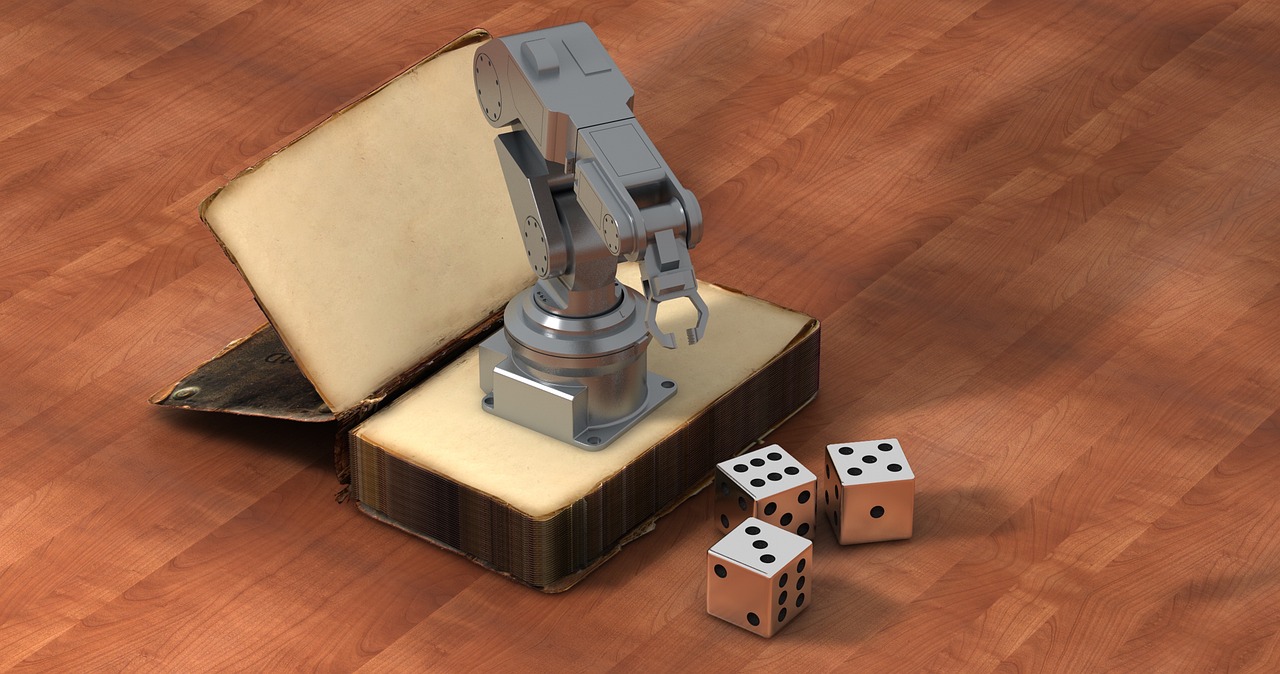
Robotic Surgery Systems
In the ever-evolving landscape of military medicine, stand out as a beacon of hope and innovation. These advanced technologies are not just tools; they are game-changers that enhance the precision and efficacy of surgical procedures performed in challenging environments. Imagine a battlefield where every second counts, and a soldier's life hangs in the balance. This is where robotic surgery systems come into play, enabling surgeons to perform complex operations with remarkable accuracy, even under the most stressful conditions.
One of the most significant advantages of robotic surgery systems is their ability to facilitate minimally invasive procedures. Traditional surgeries often involve large incisions, which can lead to longer recovery times and increased risk of infection. In contrast, robotic systems utilize tiny instruments controlled by a surgeon from a console, allowing for smaller incisions. This not only minimizes tissue damage but also leads to quicker recovery for injured personnel, enabling them to return to duty faster.
The precision offered by these robotic systems is akin to that of a skilled artisan crafting a masterpiece. Surgeons can execute delicate maneuvers with enhanced dexterity, thanks to the robotic arms that mimic human movements but with greater stability and control. This is particularly crucial in high-stakes situations where every movement must be executed flawlessly. Furthermore, the use of high-definition 3D visualization during procedures provides surgeons with a detailed view of the surgical site, allowing them to make informed decisions in real-time.
Moreover, robotic surgery systems are designed to operate in austere environments, making them ideal for deployment in combat zones. They are often compact and mobile, allowing for easy transport and setup in field hospitals. This adaptability ensures that surgical care can be delivered wherever it is needed most, without compromising on quality. The integration of these systems into military medical units not only enhances surgical capabilities but also boosts the morale of medical personnel, knowing they have access to cutting-edge technology.
While the benefits of robotic surgery systems are clear, it’s essential to address the training required for military surgeons to operate these advanced machines effectively. Comprehensive training programs are necessary to ensure that medical personnel can harness the full potential of robotic systems. This training often includes simulations that replicate real-life scenarios, enabling surgeons to practice and refine their skills before entering the operating room. The combination of advanced technology and skilled personnel creates a formidable force in military medicine, ultimately leading to better patient outcomes.
As we look to the future, the role of robotic surgery systems in military medicine is poised to expand even further. With ongoing advancements in technology, we can expect to see even more sophisticated systems that integrate artificial intelligence and machine learning, further enhancing surgical precision and decision-making capabilities. The integration of such technologies not only promises to save lives but also sets a new standard for what is possible in the field of military healthcare.
- What are robotic surgery systems? Robotic surgery systems are advanced surgical tools that allow surgeons to perform minimally invasive procedures with enhanced precision using robotic arms controlled from a console.
- How do robotic surgery systems benefit military medicine? They offer greater accuracy, reduce recovery times, and allow for surgeries in austere environments, improving overall soldier health and operational readiness.
- Are there any risks associated with robotic surgery? While robotic surgery is generally safe, like any surgical procedure, it carries risks, including complications from anesthesia and surgical errors. However, these risks are minimized with proper training and technology.
- How are military surgeons trained to use robotic systems? Military surgeons undergo rigorous training that includes simulations and hands-on practice to ensure they can effectively operate robotic surgery systems in real-life scenarios.
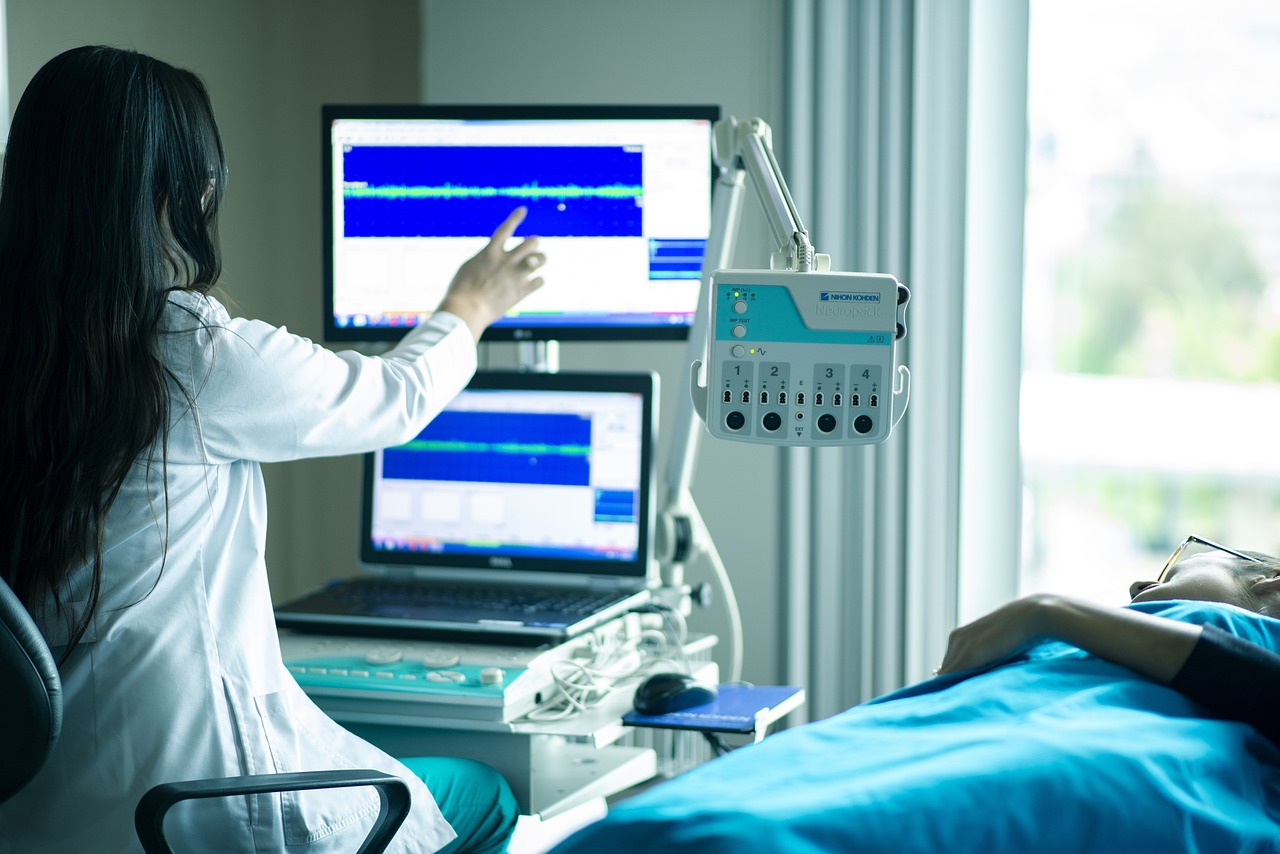
Portable Blood Transfusion Units
In the chaotic environment of a battlefield, every second counts, especially when it comes to saving lives. That’s where come into play, acting as a lifeline for injured soldiers who require immediate access to blood products. These innovative units are designed to be compact, lightweight, and easy to deploy, ensuring that medical personnel can deliver critical care right at the point of injury.
Imagine a scenario where a soldier suffers a severe injury and is losing blood rapidly. Traditional methods of transporting them to a medical facility for a transfusion can take precious minutes or even hours. However, with portable blood transfusion units, medical teams can administer life-saving blood products on-site, significantly increasing the chances of survival. These units are equipped with advanced technology that allows for rapid testing and matching of blood types, ensuring that the right product is available when it’s needed most.
One of the standout features of these units is their mobility. Designed to be easily transported by ground or air, they can be set up quickly in various environments, from makeshift field hospitals to remote locations. The units often include integrated cooling systems that maintain the necessary temperature for blood storage, ensuring the viability of the blood products during transport. This is crucial because, without proper temperature control, blood can degrade and lose its effectiveness.
Moreover, these portable units are not just about convenience; they are about enhancing the overall trauma care capabilities of military operations. By enabling immediate transfusions, they help stabilize patients before they can be evacuated to more comprehensive medical facilities. This rapid response can be the difference between life and death, particularly in cases of severe hemorrhage.
In addition to their lifesaving capabilities, portable blood transfusion units also play a crucial role in training and preparedness. Military medical personnel can practice using these units in training exercises, familiarizing themselves with the equipment and protocols. This preparation ensures that when real-life situations arise, they are ready to act swiftly and effectively.
As we look ahead, the future of portable blood transfusion technology seems promising. Ongoing research is focused on improving the efficiency and functionality of these units, potentially incorporating features like real-time blood monitoring and automated systems for blood type identification. These advancements could further streamline the transfusion process, making it even safer and more effective for soldiers in need.
- What are portable blood transfusion units?
They are compact, mobile devices that allow medical personnel to administer blood transfusions directly at the point of injury on the battlefield. - How do these units ensure the blood remains viable?
They are equipped with cooling systems that maintain the required temperature for blood storage, preventing degradation. - Can these units be used for all types of blood products?
Yes, they are designed to handle various blood components, including whole blood, plasma, and platelets, depending on the need. - How quickly can a transfusion be administered?
The units are engineered for rapid response, allowing transfusions to be performed within minutes of identifying the need.
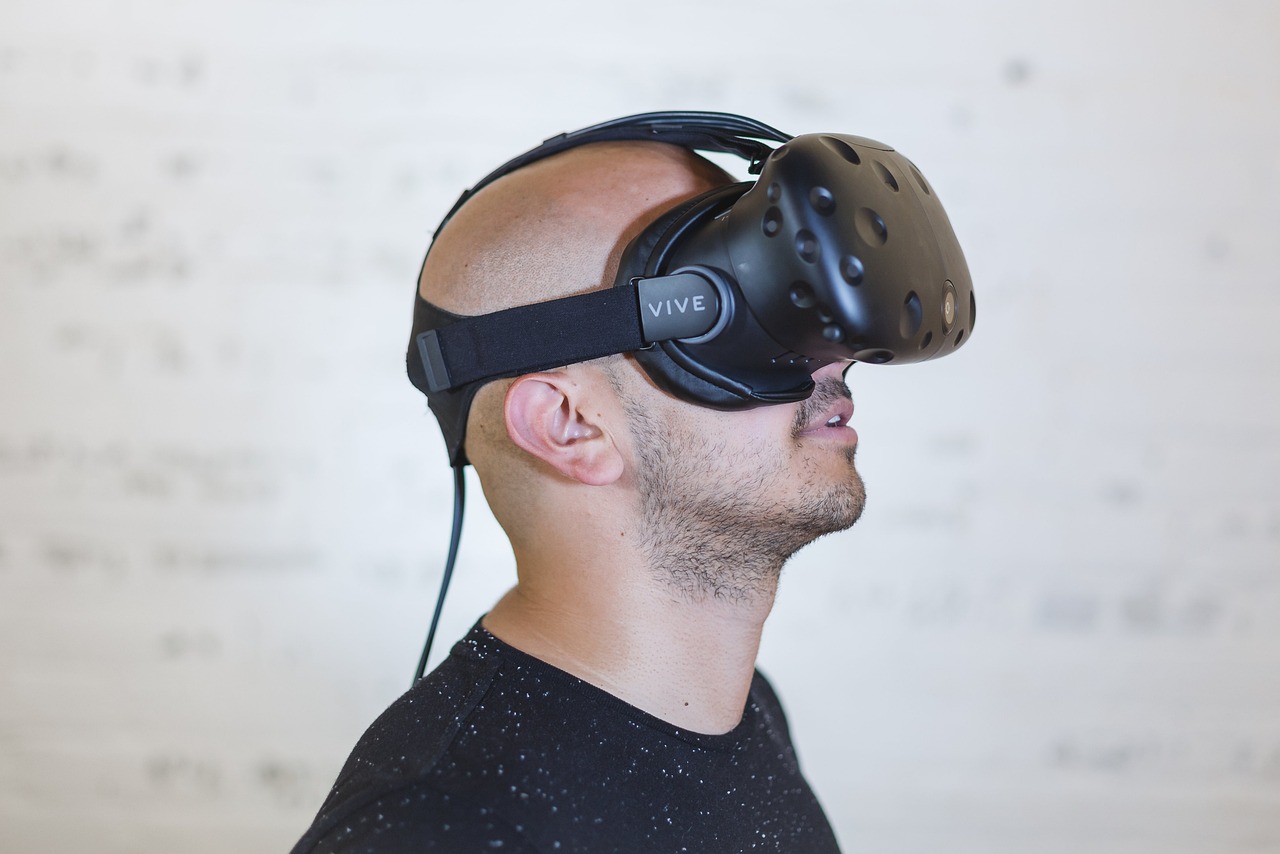
Augmented Reality for Medical Training
Imagine stepping into a training environment that feels as real as the battlefield itself, where every procedure you practice is not just a simulation but a lifelike experience. Augmented Reality (AR) is doing just that for military medical training. By overlaying digital information onto the real world, AR creates immersive scenarios that allow medical personnel to hone their skills without the risks associated with actual surgical procedures. This technology is transforming how soldiers prepare for medical emergencies, and the implications are profound.
One of the standout features of AR in medical training is its ability to provide visual aids that enhance understanding. For instance, trainees can see 3D models of human anatomy right in front of them, allowing for a better grasp of complex structures and systems. This real-time visualization can significantly enhance learning outcomes, as it caters to various learning styles. Whether you’re a visual learner or someone who needs to engage physically with the material, AR has something to offer.
Moreover, AR enables trainees to practice complex procedures repetitively in a controlled environment. This is particularly important for military medics who must be prepared to respond to traumatic injuries under pressure. With AR, they can simulate scenarios such as treating a gunshot wound or performing a life-saving procedure like a thoracotomy. The ability to repeat these simulations helps build muscle memory and boosts confidence. Imagine being able to practice a critical procedure dozens of times before ever needing to perform it on a real patient!
Another exciting aspect of AR in military medical training is its adaptability. Instructors can modify scenarios easily based on the trainees’ progress. This means that if a group is excelling in one area but struggling in another, the training can be adjusted on-the-fly to focus on the areas that need improvement. It’s like having a personal trainer who tailors your workout to your needs, ensuring that you get the most out of your training sessions.
Furthermore, AR can facilitate collaborative learning. Multiple trainees can engage in the same scenario simultaneously, allowing them to practice teamwork and communication—skills that are crucial in real-life situations. They can learn to coordinate their actions, make quick decisions together, and support each other, all while being guided by an instructor who can see their actions in real time. This collaborative aspect mirrors the dynamics of a real battlefield where teamwork can be the difference between life and death.
While the benefits of AR are clear, it’s essential to address some challenges as well. The initial investment in AR technology can be significant, and there may be a learning curve for both instructors and trainees. However, the long-term benefits—such as improved preparedness and reduced medical errors—far outweigh these initial hurdles. As technology continues to advance, we can expect AR to become an integral part of military medical training, shaping the next generation of medics.
In conclusion, Augmented Reality is not just a futuristic concept; it’s a reality that is already enhancing military medical training. By providing immersive, adaptable, and collaborative learning experiences, AR is preparing soldiers to face the challenges of the battlefield with confidence and competence. The future of military medicine looks promising, and AR is at the forefront of this transformation.
- What is Augmented Reality in medical training?
Augmented Reality (AR) enhances real-world environments with digital information, allowing medical trainees to practice procedures in a lifelike setting. - How does AR improve learning outcomes?
AR provides visual aids and repeatable simulations, catering to various learning styles and building muscle memory. - Can AR facilitate teamwork in training?
Yes, AR allows multiple trainees to engage in the same scenario, promoting collaboration and communication skills essential for real-life situations. - What are the challenges of implementing AR in training?
The main challenges include the initial investment and the learning curve for both instructors and trainees, but the long-term benefits are significant.

Mobile Field Hospitals
Mobile field hospitals have emerged as a critical component of modern military medical care, especially in conflict zones where traditional healthcare facilities may be compromised or entirely absent. These sophisticated units are designed to provide immediate medical attention to soldiers in need, ensuring that life-saving interventions can occur as quickly as possible. Imagine being in a remote battlefield, where every second counts, and having a fully equipped hospital on wheels right at your fingertips. That’s the power of mobile field hospitals!
Equipped with advanced medical technology, these mobile units are not just tents with a few supplies; they are comprehensive healthcare facilities capable of performing surgeries, administering medications, and providing intensive care. They are outfitted with essential equipment such as diagnostic tools, operating rooms, and even ICU capabilities. The design of these hospitals allows for quick setup and takedown, enabling them to adapt to the rapidly changing dynamics of the battlefield. This flexibility is crucial when time is of the essence, and every moment can make a significant difference in a soldier's survival.
One of the standout features of mobile field hospitals is their ability to operate in austere environments. They are designed to withstand harsh conditions, from extreme temperatures to rough terrains. This resilience ensures that medical teams can continue to deliver high-quality care regardless of the challenges they face. Furthermore, these hospitals are often staffed with a mix of military and civilian medical professionals, bringing a wealth of experience and expertise to the frontline.
To illustrate the capabilities of mobile field hospitals, consider the following table that outlines some of their key features:
| Feature | Description |
|---|---|
| Rapid Deployment | Can be set up within hours to provide immediate care. |
| Advanced Equipment | Includes surgical tools, diagnostic machines, and life support systems. |
| Multidisciplinary Teams | Staffed by diverse medical professionals, including surgeons, nurses, and specialists. |
| Telemedicine Integration | Allows for remote consultations with specialists for complex cases. |
Additionally, mobile field hospitals utilize telemedicine technology to connect with specialists who can provide guidance and support during medical emergencies. This capability is particularly important when dealing with complex trauma cases where expert advice can significantly influence treatment outcomes. The integration of telemedicine not only expands the reach of medical expertise but also enhances the overall effectiveness of the care provided.
In conclusion, mobile field hospitals represent a remarkable innovation in military medicine, bridging the gap between frontline care and advanced medical treatment. They embody the principle that no soldier should have to suffer due to a lack of medical resources, and their presence on the battlefield can dramatically improve survival rates and recovery times. As technology continues to evolve, we can expect even more advancements in these mobile units, further enhancing their capabilities and effectiveness in saving lives.
- What is a mobile field hospital? A mobile field hospital is a fully equipped medical facility that can be rapidly deployed to provide healthcare in remote or combat zones.
- How quickly can a mobile field hospital be set up? Most mobile field hospitals can be operational within hours of arrival at a designated location.
- What types of medical care can be provided in these hospitals? They can provide a wide range of services, including emergency surgeries, trauma care, and intensive care.
- Are mobile field hospitals staffed by military personnel only? No, they often include both military and civilian medical professionals to ensure a broad range of expertise.

Artificial Intelligence in Diagnostics
Artificial Intelligence (AI) is making waves in the field of military medicine, particularly in diagnostics. Imagine a world where medical professionals can analyze vast amounts of data in mere seconds, pinpointing issues that would typically take human eyes hours or even days to uncover. This isn’t just a dream; it's the reality that AI is bringing to the battlefield. By integrating sophisticated algorithms and machine learning, AI tools are enhancing the accuracy and speed of medical diagnostics, which is crucial in high-stakes environments like combat zones.
One of the most significant advantages of AI in diagnostics is its ability to process and analyze data from various sources, including medical imaging, patient records, and real-time health monitoring devices. For instance, AI systems can evaluate X-rays or MRIs to detect fractures, tumors, or other abnormalities with remarkable precision. This capability not only speeds up the diagnosis but also reduces the likelihood of human error, which can be critical when every second counts in a military setting.
Moreover, AI-driven diagnostic tools can assist healthcare providers by offering predictive analytics. By analyzing historical data and current health trends, these tools can forecast potential health issues before they escalate. This proactive approach allows medical teams to implement preventive measures, ensuring that soldiers remain fit for duty. For example, if an AI system detects early signs of dehydration or fatigue in a soldier based on their vital signs, medical personnel can intervene promptly, potentially preventing more severe health complications.
Another fascinating aspect of AI in diagnostics is its ability to learn and adapt. The more data these systems process, the better they become at identifying patterns and anomalies. This self-improvement means that over time, AI tools can provide increasingly accurate assessments, which is especially beneficial in a military context where conditions are often unpredictable. Imagine a scenario where a soldier presents with unusual symptoms; an AI system can quickly reference a vast database of similar cases, suggesting possible diagnoses and treatment options that a human might overlook.
To illustrate the impact of AI in diagnostics, consider the following table that summarizes some key benefits:
| Benefit | Description |
|---|---|
| Speed | AI can analyze diagnostic data in seconds, allowing for quicker decision-making. |
| Accuracy | Reduces human error by providing precise analysis of medical images and data. |
| Predictive Analytics | Forecasts potential health issues, enabling early intervention. |
| Continuous Learning | Improves over time by learning from new data and cases. |
As we look to the future, the integration of AI in military diagnostics promises to revolutionize how medical care is delivered in combat zones. This technology not only enhances the capabilities of healthcare providers but also significantly improves the chances of survival for injured soldiers. In a world where every second counts, AI stands as a formidable ally in the quest to provide the best possible care on the battlefield.
- What is Artificial Intelligence in diagnostics? AI in diagnostics refers to the use of machine learning and algorithms to analyze medical data and provide insights for faster and more accurate diagnoses.
- How does AI improve diagnostic accuracy? AI algorithms can process vast amounts of data, identifying patterns and anomalies that may be missed by human practitioners, thus reducing the likelihood of errors.
- Can AI predict health issues? Yes, AI can analyze historical and real-time data to forecast potential health problems, allowing for early interventions.
- Is AI reliable in high-stakes environments like the military? Absolutely! AI systems are designed to learn and adapt, making them highly reliable in dynamic and challenging settings.
Frequently Asked Questions
- What is telemedicine, and how is it used in combat zones?
Telemedicine refers to the use of technology to provide medical care remotely. In combat zones, it allows healthcare professionals to conduct real-time consultations with injured soldiers, ensuring that they receive timely and appropriate care, even when they're far from medical facilities. This innovation enhances decision-making and can significantly improve patient outcomes in high-pressure situations.
- How do wearable health monitoring devices benefit soldiers?
Wearable health monitoring devices continuously track vital signs, such as heart rate and oxygen levels, allowing for early detection of potential health issues. This proactive approach ensures that soldiers can receive timely interventions, maintaining their operational readiness and overall health during missions.
- What are advanced trauma care techniques?
Advanced trauma care techniques are innovative methods designed to improve survival rates among injured soldiers. These techniques emphasize rapid response and stabilization of injuries, transforming the way medical personnel address severe trauma on the battlefield, ultimately saving lives.
- How is 3D printing used in military medical supplies?
3D printing technology allows for the on-demand creation of essential medical supplies, such as prosthetics and surgical tools. This capability reduces logistical challenges associated with transporting medical supplies, ensuring that troops have immediate access to the equipment they need when they need it.
- What are robotic surgery systems, and why are they important?
Robotic surgery systems enhance the precision of surgical procedures, especially in austere environments. By enabling minimally invasive techniques, these systems help reduce recovery times and improve surgical outcomes for injured personnel, making them a critical component of modern military medicine.
- What role do portable blood transfusion units play in trauma care?
Portable blood transfusion units provide immediate access to life-saving blood products on the battlefield. By streamlining the transfusion process, these units significantly enhance trauma care capabilities, allowing medical personnel to act quickly in critical situations and improve the chances of survival for injured soldiers.
- How does augmented reality enhance medical training for military personnel?
Augmented reality (AR) technology creates immersive simulations that allow military trainees to practice complex medical procedures in a safe and controlled environment. This hands-on experience boosts their skills and confidence, better preparing them for real-life situations they may encounter on the battlefield.
- What are mobile field hospitals, and why are they essential?
Mobile field hospitals are advanced medical facilities that can be deployed in conflict zones to provide immediate care to soldiers. Equipped with state-of-the-art technology, these hospitals ensure that injured personnel receive timely medical attention, which is crucial for improving survival rates and recovery times.
- How is artificial intelligence being integrated into military diagnostics?
Artificial intelligence (AI) is being utilized to enhance the accuracy and speed of medical diagnostics in military settings. AI-driven tools support healthcare providers by quickly identifying medical conditions, enabling them to make informed decisions rapidly, which can be vital in life-or-death situations.


